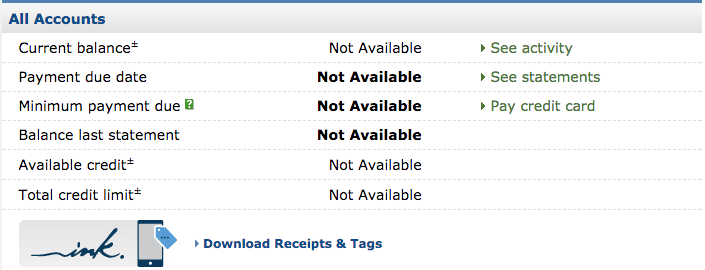Leapfrogging is not:
- 1. Related to children’s educational video games
- 2. Where you jump over your seatmate to access the aisle when they are asleep.
Leapfrogging is:
- Balancing two (or more) programs with an emphasis on one until your goal is nearly reached, and then you switch to an emphasis on the next and add a third, A-B, B-C, C-D, etc.
Simply put you should always be working on your next international flight, as well as the one after that.
Do you know where your next international trip is planned to be? If you went ahead and chose your international travel by selecting a city first, you probably do. Let’s assume your goal is 4 tickets in coach to Rome with AA miles. You’re looking at needing 240,000 miles for this trip.
Do you know where your next trip after that is planned? I’m here today to stress the importance of knowing where it will be, even if it is far into the future. There is a very valuable lesson to be learned in balancing two (or more programs) at the same time.
You can be too focused on one program, and miss out on a great mileage earning opportunity with another. And when you’re “juggling” more than one program you learn skills that will continue to be useful in collecting and redeeming miles.
The Leapfrog Method
You may remember playing leapfrog in school, your jump over someone, and then they jump over you. Milenomics uses this same type of action with respect to miles. Lets say next year you’d like to go to Thailand in February. You should not just settle on one trip. Come up with another place to go, later in the summer, or in the fall, or even a whole year later if you must.
An example leapfrog strategy:
- Plan Trip A (Thailand)
- Brainstrom Trip B (unknown)
- Churn and earn miles for A
- Settle on Trip B (Brazil)
- Apply for new card during Fall Credit Card Calendar for trip A and Trip B
- Start churning for Trip B as your mileage needed for Trip A is reached
- Redeem for trip A around November
- Stop earning for Trip A, and focus more on earning for Trip B(Brazil)
- Come up with idea for Trip C (Tokyo)
- Apply for Credit cards for Trip B and C as part of Winter CCC
- Start Churning for Trip C as you reach the miles needed for Trip B
- Redeem for Trip B around January
- Stop earning for trip B, focus more on trip C…
As you see the program goes A-B, B-C, C-D, etc. You’re creating a chain of events. You’re not going to ever be focused on just one redemption.
Serial Versus Parallel Processing of Miles
Why not just focus on one program at a time?
This is a great question. I’ll agree it is certainly less work to have this type of approach. I’ve identified the following reasons that the Leapfrog method is beneficial:
First, your capacity to earn miles is not restricted to just one program. In fact you’re probably limiting yourself by just having a focus on one type of mileage. You have a certain capacity of earning miles per month based on your geographic proximity to certain stores, your credit lines, your free time. When you collect just one mile you’re like a computer processing information one piece at a time (serial processing). You have so much potential, but you’re stuck waiting for one program to finish filling up with miles before starting the next program.
Think about this; if you’re doing Milenomics Mileage Runs you’re only able to buy as much as your credit card limit allows, and then as fast as you can pay it off you can reopen room to do more MMRs. However when you have domestic programs, and two or more international destinations in mind you’re able to create a pattern. Earn DL miles on Monday, AA on Tuesday, UA on Wednesday, and repeat that pattern. This is all part of why Milenomics splits up our programs into domestic and international, and also why we limit our total number of programs (sorry Aeroplan, and Krisflyer miles).
Your total miles earned per month will increase as you find better ways to buy, redeem, and earn miles in multiple programs. What you learn will immediately be beneficial to all the programs you currently earn in. The best computer comparison is that when you’re leapfrogging you’re parallel processing of miles. With multiple input streams you reach your full capacity to earn and saturate your opportunities.
And finally, by using the Leapfrog Method you’ll be able to look into redemption options early, and be able to estimate flight availability and which partner airlines you’d like to try to book on.
How Leapfrogging Was Born:
When I first started out collecting miles I was totally focused on AA miles. This shortsightedness meant I missed out on a US grand slam that year, as well as many, many other great opportunities.
The idea of “filling up” on Frequent Flyer Mile program to the level I needed it at (around 240,000 miles) and simultaneously moving onto the next was something I started to do just by accident.
Going to Thailand a few months ago wiped out my United Miles, taking 240,000 of them. In just 6 months I’ve recovered to nearly that level, thinking I’d use AA miles for my next trip, and then replenish UA for my following trip to South Africa.(more on that here) This year has by far been my best earnings year for Miles yet–and I like to think that the Leapfrog method is to thank for that. The benefits of learning to balance 2, 3, 4, or more programs, and the gains of doing so are immense.
Do you practice leapfrogging? If so share any tips or tricks you’ve found in the comments section, or on Twitter: @Milenomics.[rule]




